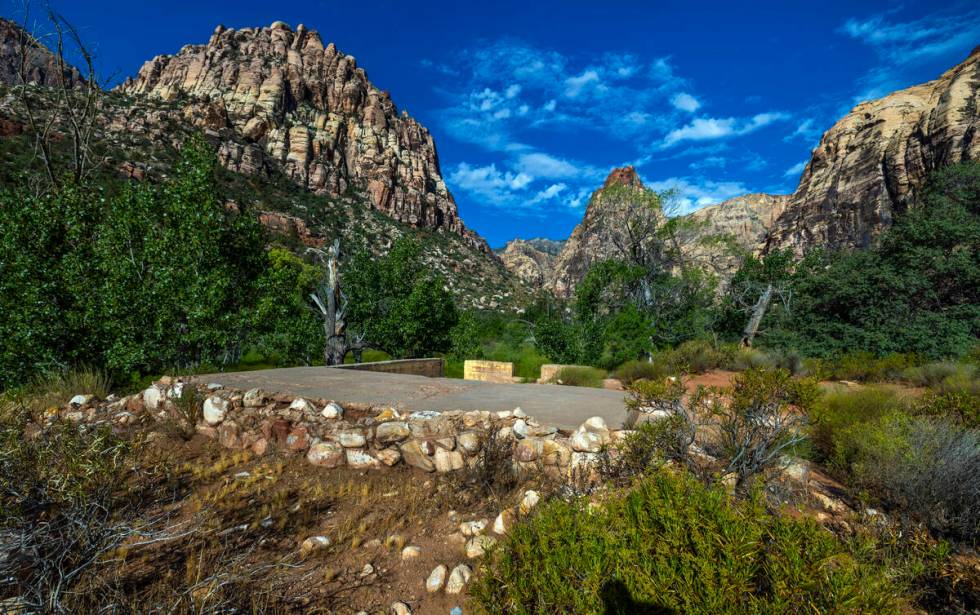You can see remains of a homestead at Red Rock. What’s its story?

About a mile down the rocky Pine Creek Canyon Trail that begins near the end of the Red Rock Canyon scenic loop, there’s a tranquil spot where the leaves of gnarled apple trees rustle in the breeze, birds twitter and a meadow is surrounded by towering mountains.
What makes this site distinct from others in Red Rock Conservation Area is that it also has signs of past human occupation: steps that lead to a cracked concrete slab and a concrete foundation.
It’s known as the Wilson Homestead and has ties to significant Las Vegas historical figures, according to Jonathan Warren, a local history enthusiast and Las Vegas’ honorary consul of Monaco.
The house was built sometime in the early 1920s by a mason named Horace Wilson, who was born in Indiana and served in the Spanish-American War. Wilson had an orchard and lived from small farming, Warren said.
In a 1974 interview with the Las Vegas Review-Journal’s Nevadan magazine, Wilson’s widow, Glenna, said her husband came across Pine Creek while horseback riding in 1922.
They were married that year and filed an 80 acre homestead. Horace used a shovel to build a road so he could get lumber to the site.
“Every time we came to town we pulled a drag to level out the road bed,” Glenna Wilson said.
At Pine Creek, they grew an orchard and a garden with sweet potatoes, melons and strawberries. They used an outdoor shower that was concealed by a grape arbor.
Wilson eventually sold the house to Harry Fessenden Meserve, an investor in what became the Las Vegas Strip, according to Warren. Meserve was a banker with an international career that included making loans to the regime of Tsar Nicholas to try to prop it up before the Bolshevik Revolution, which Meserve narrowly escaped.
The 1974 story said Wilson sold directly to Leigh Hunt, an associate of Meserve, in 1928. Glenna Wilson said Hunt intended to raise Arabian horses, entertain visitors and eventually be buried at the property.
Either way, the Wilsons stayed on the property after the sale.
Meserve and Hunt used the lodge to promote their landholdings, Warren said, which included 4,000 acres and most of the land that stretched between what’s now Charleston Boulevard almost to Desert Inn Road. It was a place to entertain visiting investors.
“Hunt was convinced Las Vegas would become the resort corridor of the world,” Warren said.
“He had a good deal of confidence in Vegas and got a lot of his friends to invest here,” Walter Hunsaker, Hunt’s former secretary, told the Nevadan in 1974. “Oldtimers thought he paid outlandish prices for land. When he bought 400 acres for $300 an acre where Sahara Avenue and Paradise Road are now, they decided he was stark raving mad.”
Hunt was the namesake of the Huntridge neighborhood, said UNLV history professor Michael Green. And the house is a reminder that there were many houses and homesteads in Las Vegas’ early history outside of the railroad townsite downtown, he said.
The homestead’s stint as Hunt’s retreat didn’t last long. Hunt, who lost money in the depression, died in 1933 and the Wilsons left the property that year.
Vandals destroyed the property and eventually burned the house. The property passed through the hands of several private owners before the Nevada State Parks bought it in 1974, according to the Nevadan story. Horace died in 1967 and Glenna in 1980.
Contact Noble Brigham at nbrigham@reviewjournal.com. Follow @BrighamNoble on X.